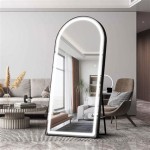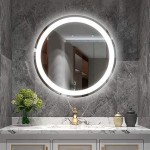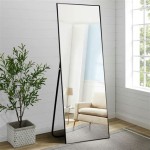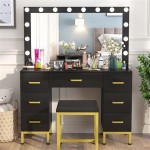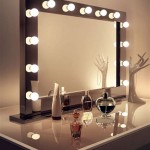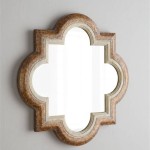Command Hooks for Mirrors: A Comprehensive Guide
Hanging a mirror can be a daunting task, often involving drills, screws, and the potential for wall damage. Command hooks offer a damage-free alternative, providing a secure and convenient way to hang mirrors of varying sizes and weights. This article explores the world of Command hooks for mirrors, covering their types, weight capacities, installation process, removal techniques, and best practices for ensuring a secure and long-lasting hold.
Types of Command Hooks for Mirrors
Command offers a variety of hooks specifically designed for hanging mirrors. Understanding the different types available is crucial for selecting the appropriate hook for a specific mirror and wall surface.
*
Large Mirror Hangers:
These hooks are designed for heavier mirrors and typically come in pairs, distributing the weight evenly. *Medium Mirror Hangers:
Suitable for medium-sized mirrors, these hooks also often come in pairs for balanced support. *Small Mirror Hangers:
Ideal for smaller, lighter mirrors, these can be used individually or in pairs depending on the mirror's weight. *Picture Hanging Strips:
While not specifically designed for mirrors, these strips can be used for lighter mirrors and offer a low-profile hanging solution. *General Purpose Hooks:
Some general-purpose Command hooks can also be used for mirrors, provided they have the appropriate weight capacity.Weight Capacity Considerations
One of the most critical factors to consider when choosing Command hooks for mirrors is weight capacity. Each hook is designed to hold a specific maximum weight, which is clearly indicated on the packaging. Exceeding this weight limit can result in the mirror falling, potentially causing damage to both the mirror and the wall. It is essential to accurately weigh the mirror before selecting the appropriate Command hook.
*
Weighing the Mirror:
Use a bathroom scale or a luggage scale to determine the exact weight of the mirror. *Choosing the Right Hook:
Select a hook with a weight capacity that exceeds the mirror's weight. Opting for a hook with a higher weight capacity provides an added safety margin. *Distributing the Weight:
For heavier mirrors, using two or more hooks distributes the weight more evenly, reducing strain on individual hooks and the wall.Surface Compatibility
Command hooks are designed to adhere to a variety of surfaces, but certain surfaces are more suitable than others. Understanding surface compatibility ensures a strong and reliable bond.
*
Ideal Surfaces:
Smooth surfaces like painted walls, tiles, glass, and metal are generally ideal for Command hooks. *Unsuitable Surfaces:
Textured wallpaper, brick, unfinished wood, and delicate surfaces are generally not recommended for Command hooks. *Surface Preparation:
Clean the surface thoroughly with isopropyl alcohol before applying the Command strips to ensure optimal adhesion. Avoid using household cleaners, as they can leave residue that interferes with the adhesive.Installation Procedures
Proper installation is crucial for maximizing the holding power of Command hooks. Following the manufacturer's instructions precisely ensures a secure and long-lasting hold.
*
Clean the Surface:
Thoroughly clean the wall surface with isopropyl alcohol. *Attach the Strips:
Separate the Command strips and attach them to the back of the hook or directly to the mirror frame, following the instructions provided. *Press Firmly:
Press the hook firmly against the wall for the recommended amount of time, typically 30 seconds. *Wait Before Hanging:
Allow the adhesive to bond fully with the wall before hanging the mirror, typically one hour.Removing Command Hooks
One of the significant advantages of Command hooks is their clean removal. The following steps ensure the removal process does not damage the wall surface.
*
Stretch the Adhesive Tab:
Grasp the pull tab at the bottom of the strip and slowly stretch it downwards, parallel to the wall. *Avoid Pulling Outwards:
Do not pull the strip away from the wall at a perpendicular angle, as this can damage the paint or surface. *Continue Stretching:
Keep stretching the tab until the hook releases from the wall.Tips for Ensuring a Secure Hold
Implementing best practices can further enhance the security and longevity of the bond between the Command hook, the mirror, and the wall.
*
Temperature Considerations:
Avoid applying Command hooks in extreme temperatures, as this can affect the adhesive's performance. *Wait Time:
Adhere to the recommended waiting time after application before hanging the mirror. *Heavy Mirrors:
For exceptionally heavy or large mirrors, consider using additional hooks for added support. *Regular Inspection:
Periodically inspect the hooks and strips for any signs of wear or damage.Choosing the Right Hook for the Job
Selecting the correct Command hook for a specific mirror requires careful consideration of the mirror’s weight, size, and the wall surface. Consulting the manufacturer's guidelines and weight recommendations is essential for ensuring a safe and secure installation.
*
Mirror Weight:
Accurately weigh the mirror using a reliable scale. *Wall Surface:
Consider the type of wall surface and its suitability for Command hooks. *Manufacturer's Recommendations:
Refer to the packaging for specific weight limits and application instructions.
Using Command Strips For Hanging A Mirror The Morris Mansion

Using Command Strips For Hanging A Mirror The Morris Mansion

Command 4 Lb Medium White Sawtooth Picture Hangers 2 Hooks Strips 17040 Vp The Home Depot

Using Command Strips For Hanging A Mirror The Morris Mansion

How To Hang Heavy Mirrors Frames Without Nails 3m

Command 4 Sets Large Sized Picture Hanging Strips White Target

Command Large Picture Hanging Strips 8 Meijer

Command 20 Lb Picture Hanging Strips 3m United States

Diy Mirror Jewelry Wall Hangers Homey Oh My

How To Hang Heavy Mirrors Frames Without Nails 3m

